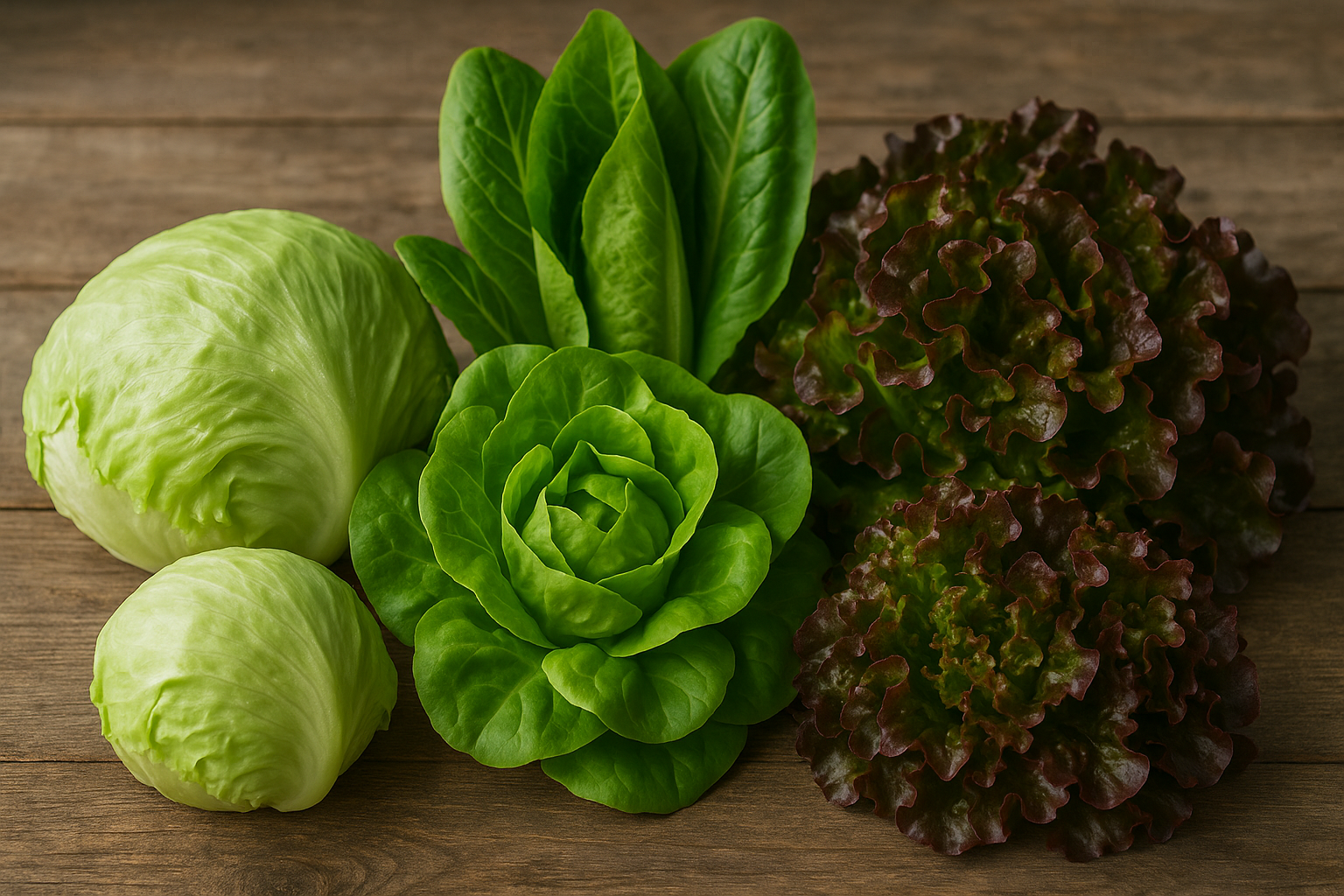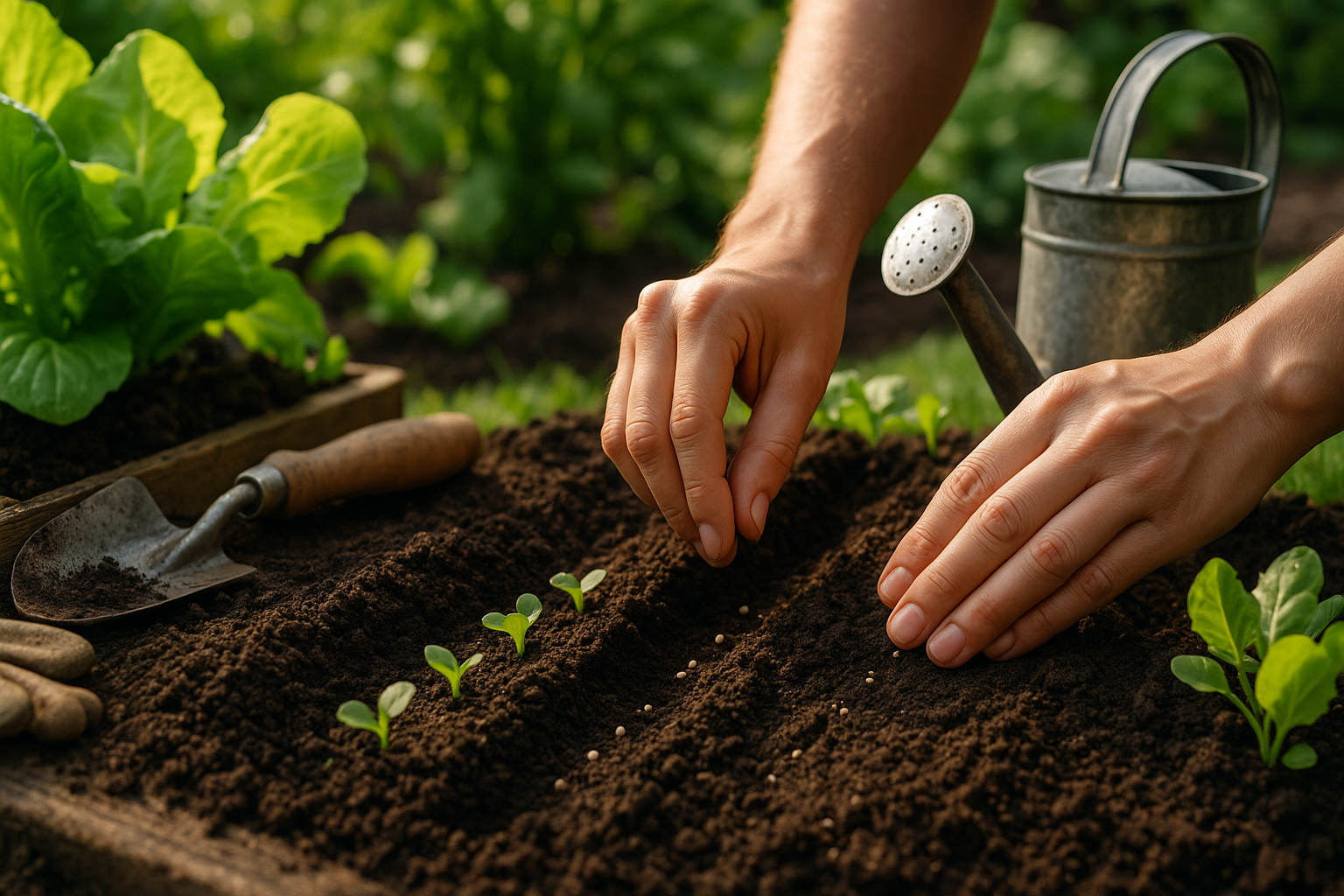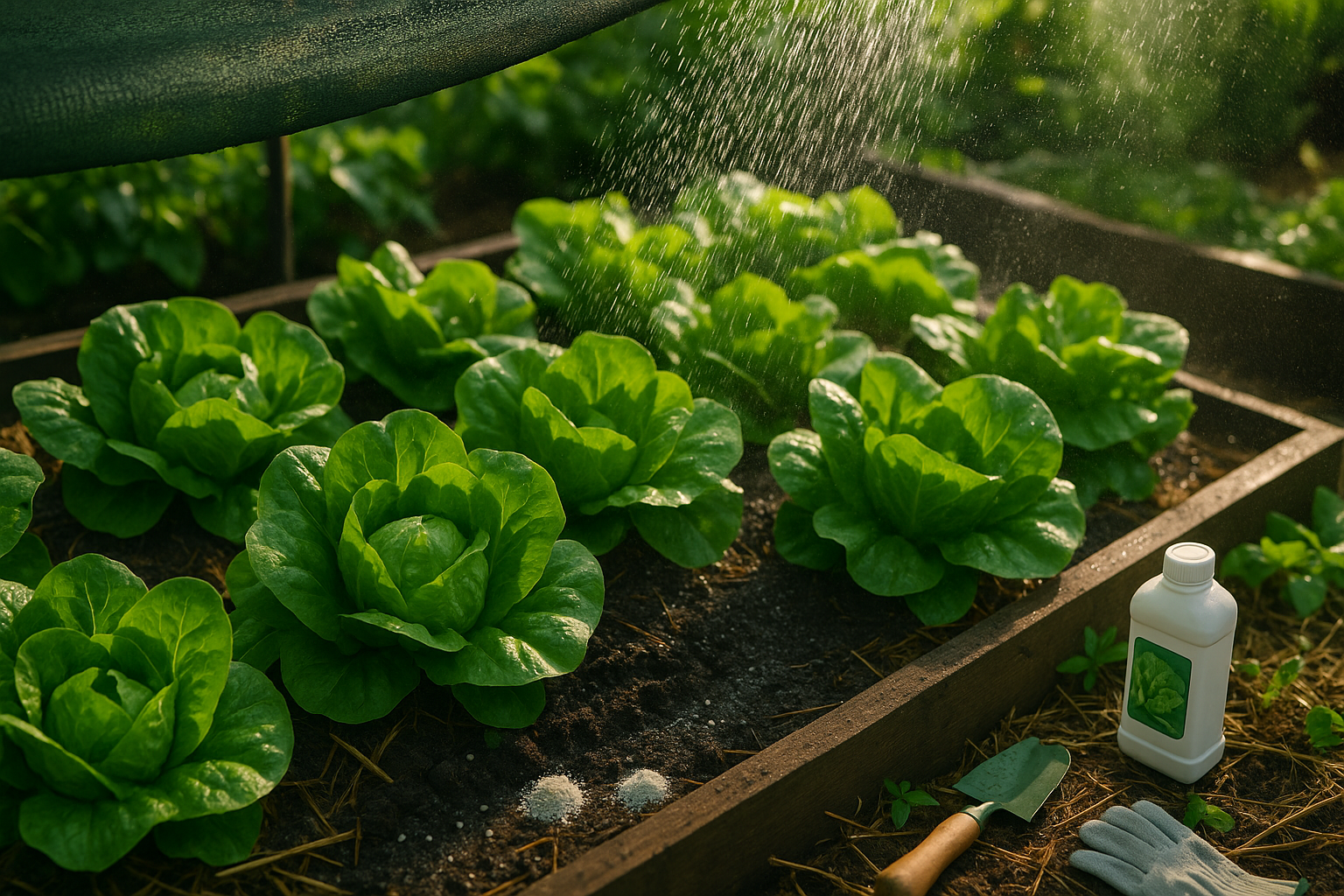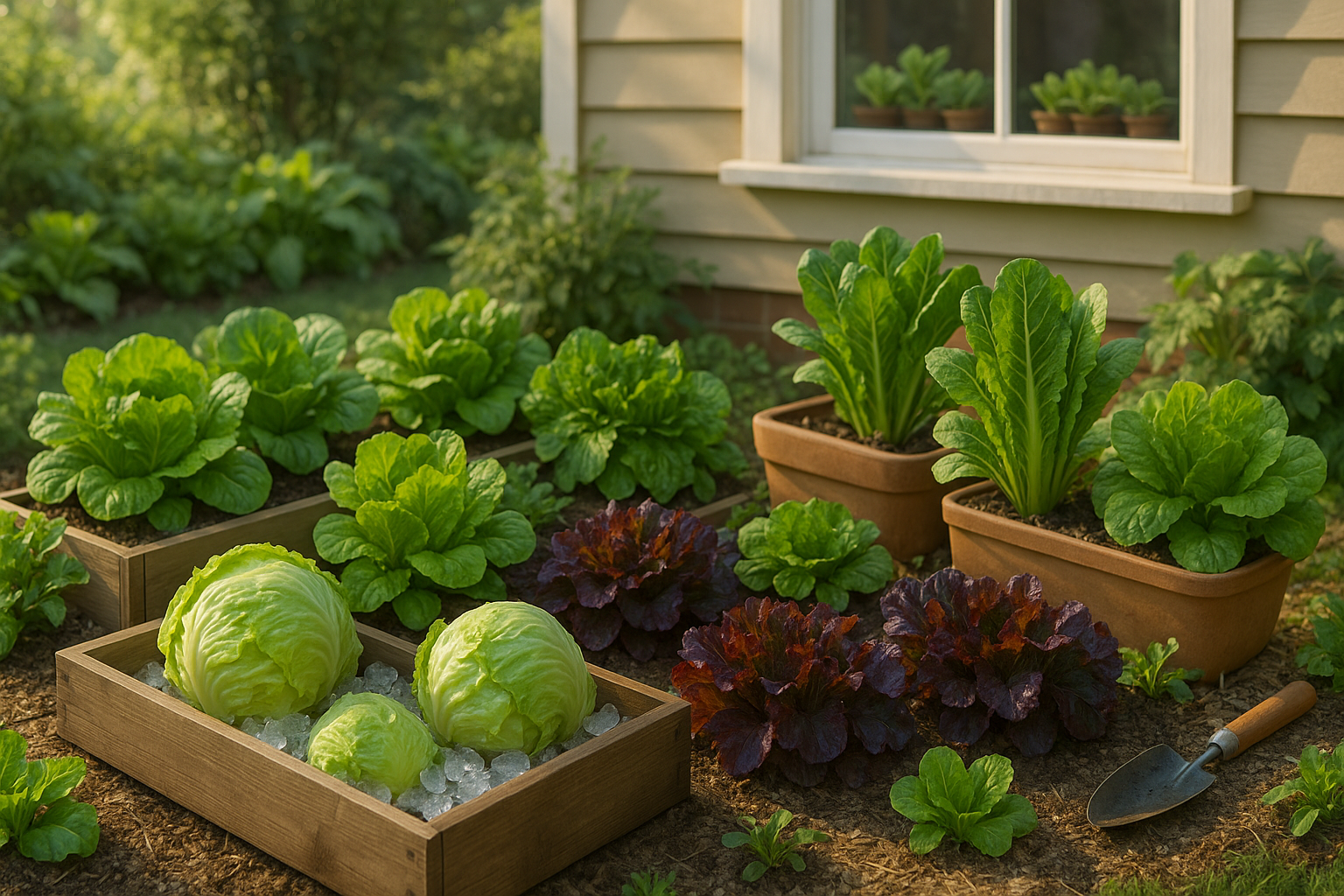Introduction to Growing Lettuce
Learning how to grow lettuce is a rewarding step for gardeners of any skill level, from first-timers to green-thumbed experts. Lettuce is a fast-growing, adaptable crop that thrives in a wide range of climates and spaces, whether you have a sprawling backyard or just a sunny windowsill.
Its short growth cycle means you can enjoy fresh, crisp leaves in as little as 30 days, making it a perfect crop for those eager to see quick results. Beginners love lettuce because it requires minimal fuss and is forgiving of minor mistakes; even if you miss a watering or two, lettuce often bounces back.
More advanced gardeners appreciate lettuce for its wide variety—crunchy romaine, tender butterhead, colorful leaf lettuces, and hearty iceberg—each bringing distinct textures and flavors to the table, along with varying tolerance for heat and cold.
If you want to stretch your gardening skills, try growing lettuce from both seeds and kitchen scraps. Starting from seeds gives you access to unique heritage varieties, while regrowing from scraps—using just the leftover base of a store-bought head—offers a fun, sustainable way to keep your salads fresh year-round.
Whether your garden is traditional or innovative, lettuce is an easy and delicious place to start experimenting.
Choosing the Right Lettuce Variety

When it comes to picking the perfect lettuce for your garden or plate, knowing the main types is a great place to start. Crisphead lettuce, like the classic iceberg, forms tight, round heads and offers a mild flavor with a crunchy texture—great for burgers and sandwiches, but it prefers cooler weather.
Romaine, easily recognized by its upright, elongated heads, delivers a more robust flavor and crispness, making it a favorite for Caesar salads; it’s a bit more heat tolerant than crisphead. Leaf lettuce, which includes varieties like Red Sails or Simpson Elite, grows as loose, tender leaves you can harvest as needed—these are quick to mature, thrive in most climates, and are perfect for those new to gardening.
Butterhead types, such as Boston or Bibb, feature soft, buttery leaves and a delicate flavor, excellent for wraps or gentle salads, though they can be more vulnerable to heat.
Tips for Selecting Lettuce
When selecting lettuce, consider your local climate and the season. If you garden in a hot region or during summer, look for varieties labeled “bolt-resistant” or specifically bred for heat tolerance, like Summercrisp or Jericho romaine. In cooler seasons, almost any type will do, but early spring and fall sowings are especially suited for butterhead and leaf lettuces.
Beginners should try easy, forgiving varieties like Black Seeded Simpson or Salad Bowl, which offer fast germination and are less likely to bolt. More experienced growers can experiment with heirloom lettuces or slow-growing crisphead types for unique textures and flavors.
By matching lettuce varieties to your growing conditions and tastes, you’ll maximize both your harvest and your mealtime enjoyment.
Soil Preparation and Planting

Lettuce thrives in cool, loose, fertile soil with good drainage and a neutral to slightly acidic pH between 6.0 and 7.0. To create these optimal conditions, start by loosening the soil to a depth of 8–12 inches and mixing in 2–3 inches of compost or well-rotted manure to boost fertility and improve soil structure.
If your garden soil is heavy clay or tends to hold water, amend it with sand or perlite to ensure excess moisture drains away, which helps prevent issues like root rot. For containers, use a high-quality potting mix designed for vegetables, and make sure pots have drainage holes.
Before sowing, rake the soil surface level and break up any large clumps so lettuce seeds can establish easily.
When it comes to planting, you can either direct sow seeds outdoors or start them indoors three to four weeks before your last expected frost date.
- Direct Sowing: Scatter seeds thinly in rows spaced 12–18 inches apart, then lightly cover with about 1/8 inch of fine soil—lettuce seeds need light to germinate, so don’t bury them deeply. Once seedlings are about an inch tall, thin them to 6–8 inches apart for leaf varieties or 10–12 inches for head-forming types, ensuring good airflow and room to grow.
- Indoor Seed Starting: Sow seeds in trays or cell packs filled with moistened seed-starting mix. Gently transplant seedlings outdoors when they have at least two true leaves and nighttime temperatures remain above 40°F. Handle the delicate seedlings by their leaves, not stems, to avoid damage. Transplant at the right depth so the roots are covered but the crown remains above soil.
For a continual harvest, practice succession planting by sowing new seeds every two to three weeks. This keeps fresh lettuce on your table all season long and makes the most of your garden or container space.
Lettuce Care

Caring for lettuce is all about balance—keep their shallow roots evenly moist by watering consistently, aiming for about one inch of water per week. Morning watering is best to help prevent disease and mildew. You’ll know it’s time to water when the top inch of soil feels dry to the touch.
Watch for signs of underwatering, such as drooping, scorched leaf edges, or stunted growth. On the other hand, yellowing leaves and mushy roots often signal overwatering.
When it comes to feeding, lettuce isn’t a heavy feeder but loves nutrient-rich soil. Before planting, mix in plenty of compost or well-rotted manure. During the growing season, a light feeding every few weeks with a balanced organic fertilizer (like fish emulsion or dilute compost tea) will keep plants thriving without overwhelming them.
Lettuce prefers cooler temperatures—ideally between 45°F and 70°F—and lots of light, but too much direct afternoon sun in hot weather can cause stress. In warmer climates, provide partial shade using row covers, shade cloths, or even by planting in the shadow of taller crops.
Hot temperatures and long days can quickly trigger bolting, where the plant rushes to flower and the leaves turn bitter. To prevent this:
- Choose bolt-resistant varieties
- Sow seeds in succession every two to three weeks
- Keep the soil cool and moist by using mulch
If a heatwave hits, pick lettuce early in the morning and harvest young leaves regularly to encourage new growth. By giving your lettuce steady water, gentle feeding, the right balance of sun and shade, and quick attention when the seasons shift, you’ll enjoy crisp, sweet greens long into the growing season.
Common Pests and Problems (Troubleshooting)
Gardening can be a joy, but pests and problems are an inevitable part of the journey. Some of the most common pests you’ll encounter are aphids, slugs, and caterpillars.
Aphids are tiny sap-suckers that cluster on new shoots and leaves—try blasting them with a gentle spray of water or releasing beneficial insects like ladybugs to keep their populations down.
Slugs love cool, damp conditions and chow down on young seedlings overnight; setting out beer traps or crushed eggshell barriers can help deter them.
Caterpillars, while they turn into beautiful butterflies, can decimate leaves in no time. Hand-picking them off or using biological controls like Bacillus thuringiensis (BT) spray is often an effective approach for organic gardens.
Diseases are another headache. Downy mildew shows up as yellow patches on leaves with a downy white underside—improve air circulation and avoid overhead watering to make conditions less inviting for this fungus.
Root rot, caused by soggy soil, can quickly wipe out plants; make sure your garden beds drain well and never let pots stand in water.
If you notice your plants wilting, check the soil moisture first—too much or too little water could be the culprit.
Bitter leaves, especially in greens like lettuce, often result from heat or inconsistent watering. Try providing shade cloth during the midday sun and water regularly to keep growth tender.
Bolting, when plants suddenly flower and go to seed, often happens after temperature swings or stress; harvest leafy crops promptly and consider growing bolt-resistant varieties.
Keep a close eye on your garden, respond quickly to changes, and remember that most issues can be nipped in the bud with a few simple, proactive steps.
Harvesting and Storing Lettuce
Harvesting lettuce at the right time preserves both taste and texture, and your technique depends on the variety you’re growing.
For “cut-and-come-again” lettuces like leaf or romaine, start snipping the outer leaves when they reach 4–6 inches tall, leaving the center leaves and roots intact. Use clean, sharp scissors to avoid crushing the stems, which can invite rot. This method encourages fresh inner leaves to grow, allowing for multiple harvests from the same plant—just be careful not to remove more than a third of the plant at once to support continued regrowth.
For head-forming lettuces like iceberg or butterhead, wait until the heads feel firm and full, then cut the entire head off at soil level with a sharp knife.
To maximize yield, pick lettuce early in the morning while it’s crisp and hydrated, and water the plants regularly to keep new leaves coming.
After harvest, rinse the leaves gently to remove dirt and pat them dry or use a salad spinner. Store lettuce in the refrigerator wrapped loosely in a paper towel and placed inside a perforated plastic bag or container; this helps maintain moisture without trapping too much humidity, which can cause wilting or sliminess.
For head lettuce, leave outer leaves on until you’re ready to eat to protect the core.
Well-handled lettuce can stay fresh for up to a week, but it’s best enjoyed soon after harvest when flavor and texture are at their peak.
A pro tip: if leaves become slightly wilted, soak them in cold water for 15 minutes to help them perk up before serving.
Regular, gentle harvesting paired with mindful storage is the key to enjoying crisp, garden-fresh lettuce all season long.
Advanced Tips
To keep your lettuce harvest going longer, try succession planting: sow a new batch of seeds every two to three weeks so fresh leaves are always coming in as older ones are harvested.
For a longer season, protect your lettuce from harsh weather by using cold frames or simple plastic tunnels to shield early spring or late fall crops from frost. You can also throw a shade cloth over plants to keep them growing strong through summer heat.
Indoor growing is another great solution—set up a sunny windowsill or use a grow light to keep tender greens coming when outdoor temperatures drop.
If you’re short on space, lettuce thrives in containers—just make sure pots have good drainage and are watered regularly. Hydroponic systems can be an excellent option for consistent, clean greens all year, especially in apartments.
Want to save money? Regrow lettuce from kitchen scraps: trim your store-bought lettuce head, leaving about 2 inches at the base. Place the base in a shallow bowl of water, cut side up, and put it on a sunny windowsill. Change the water every couple of days, and within a week, you’ll see new leaves and roots sprouting. Once roots develop, transplant into soil or let it keep growing hydroponically.
With these tips, anyone—no matter how much space or experience—can extend their lettuce season and enjoy a continuous supply of fresh greens.
Conclusion and Next Steps
Growing lettuce at home is all about experimenting and paying close attention to what your plants need. Don’t be afraid to try different varieties—romaine, butterhead, or even colorful red leaf—as each brings its own unique flavor and texture to your salads. Observe how your lettuce responds to sunlight, water, and temperature, and adjust your care routine accordingly. Success comes from learning as you grow.
For more tips, check out online gardening forums, follow experienced gardeners on YouTube, or explore books focused on small-space and container gardening to keep improving your green thumb. Happy planting!
